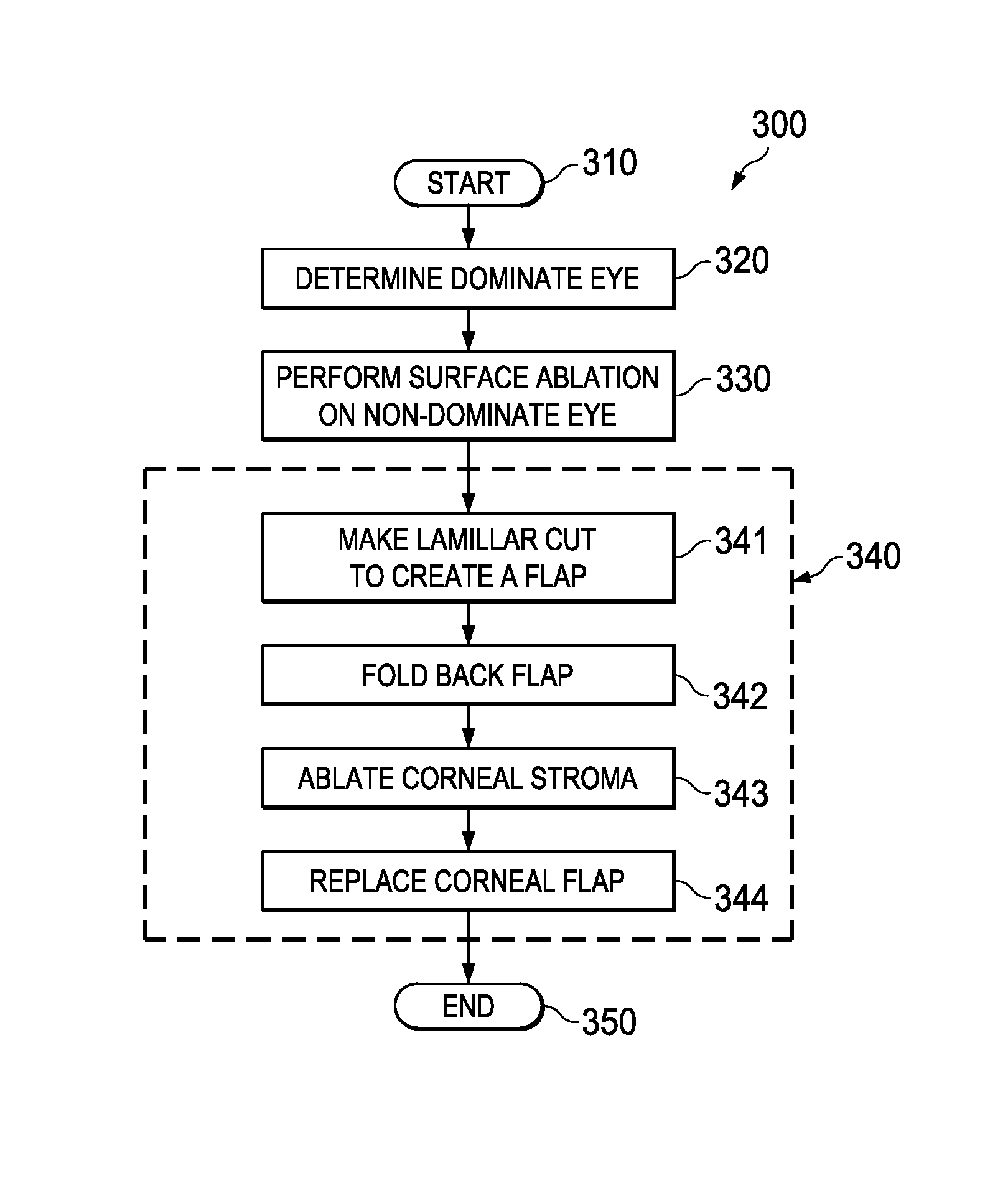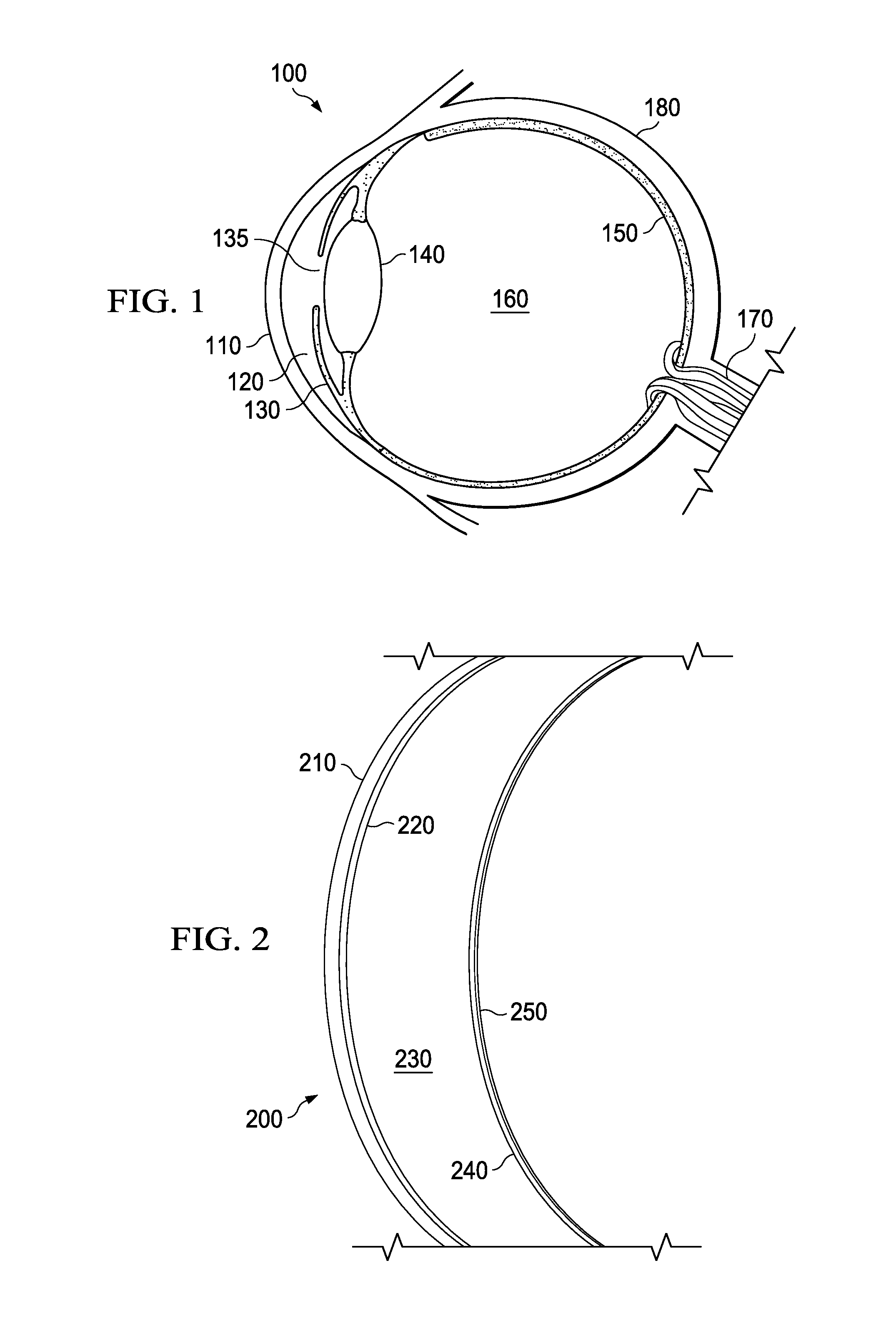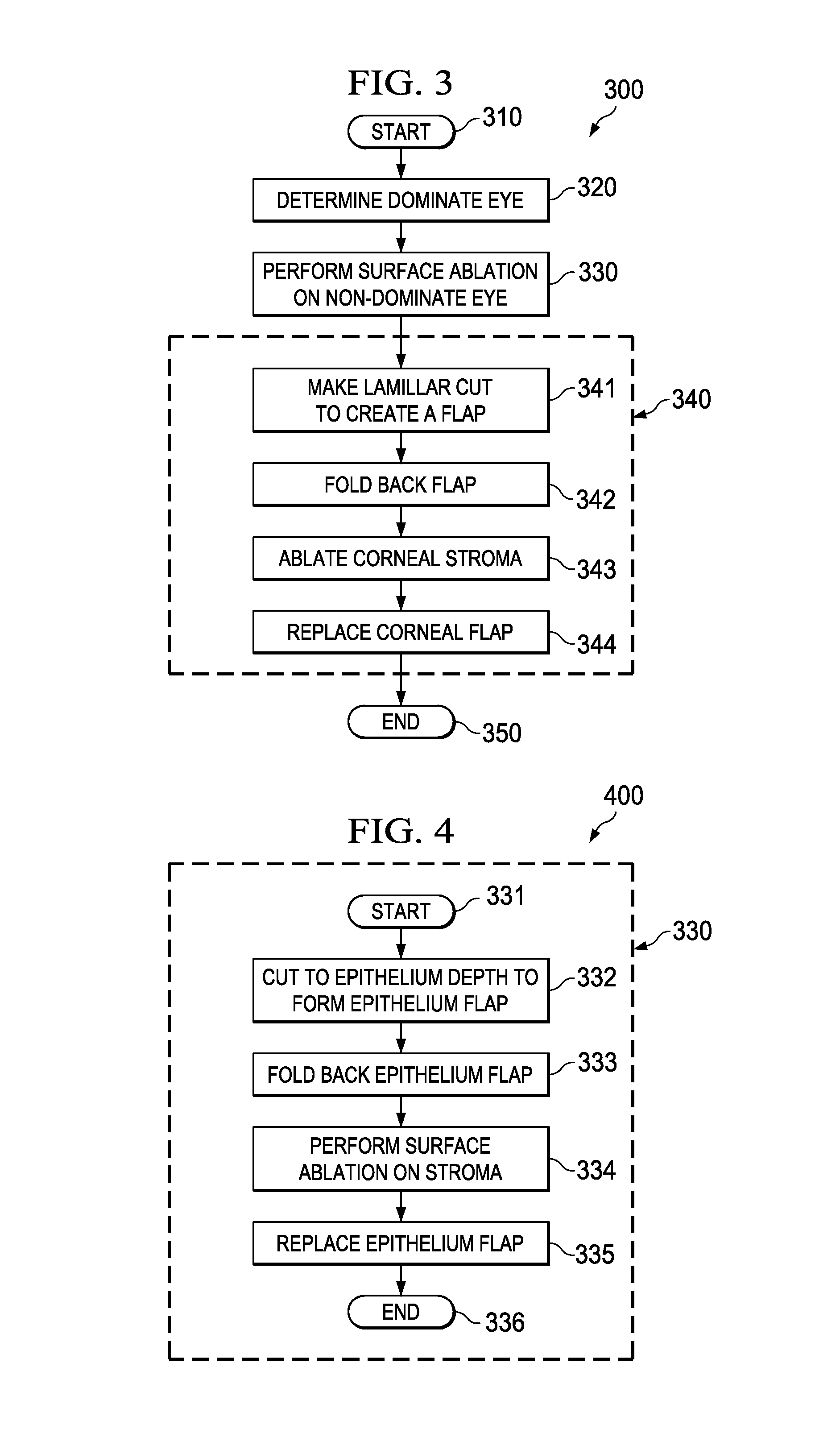Mazaheri LASIK method for visual enhancement
a mazaheri lasik and eye enhancement technology, applied in the field of surgical procedures, can solve the problems of overall healing process, increased eye dryness, and inability to meet patients' lasik needs, and achieve the effect of reducing the risk of medical complications, avoiding eye dryness, and eliminating the potential of diffuse lamellar keratitis (dlk)
- Summary
- Abstract
- Description
- Claims
- Application Information
AI Technical Summary
Benefits of technology
Problems solved by technology
Method used
Image
Examples
Embodiment Construction
[0026]Referring initially to FIG. 1, illustrated is a cross sectional view of a human eye 100 showing its major components. As light enters the eye it first passes through a lubricating tear film that coats the cornea 110, which covers the front of the eye 100 and helps to focus incoming light. After light passes through the cornea 110 it travels through a clear, watery fluid called the aqueous humor 120. The aqueous humor 120 circulates throughout the front part of the eye 100, maintaining a constant pressure inside the eye 100. The amount of light permitted to enter the eye 100 is controlled by the iris 130, which is the colored part of the eye. As light conditions change, the iris 130 may dilate to make the pupil 135 bigger or constrict to make the pupil 135 smaller to allow more or less light into the eye 100. After light travels through the pupil 135, it must pass through the lens 140. Much like the lens of a camera, the human lens 140 is responsible for focusing light by chang...
PUM
 Login to View More
Login to View More Abstract
Description
Claims
Application Information
 Login to View More
Login to View More - R&D
- Intellectual Property
- Life Sciences
- Materials
- Tech Scout
- Unparalleled Data Quality
- Higher Quality Content
- 60% Fewer Hallucinations
Browse by: Latest US Patents, China's latest patents, Technical Efficacy Thesaurus, Application Domain, Technology Topic, Popular Technical Reports.
© 2025 PatSnap. All rights reserved.Legal|Privacy policy|Modern Slavery Act Transparency Statement|Sitemap|About US| Contact US: help@patsnap.com



